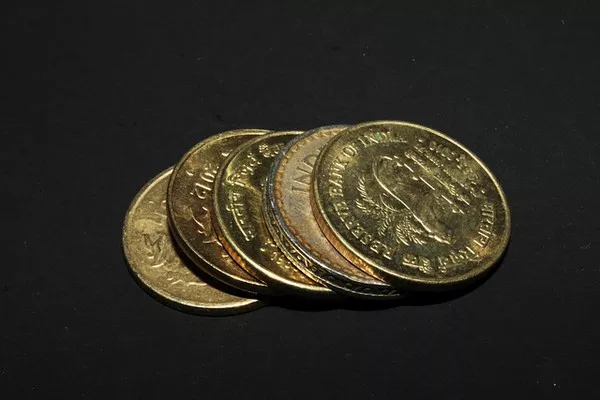The Indian currency, popularly known as the Indian Rupee (INR), has a rich history that dates back centuries. It has undergone significant transformations over time, evolving in design, security features, and composition. In this article, we will delve into the composition of Indian currency, focusing on the metal used in its production. We will explore the historical journey of Indian currency, the evolution of its composition, and the metal that gives the Indian Rupee its distinctive appearance.
A Historical Overview
The origins of the Indian currency can be traced back to ancient times when various forms of coins were used for trade and commerce. From cowry shells and metallic coins to paper money, the Indian currency has come a long way in terms of its form and composition.
During the colonial period, the British introduced the formalized monetary system in India. The Indian Rupee was introduced as the official currency, and its composition primarily consisted of silver. Silver coins were widely used, and their purity and weight played a significant role in determining their value.
Evolution of Composition
Over time, the composition of Indian currency has evolved in response to changing economic and geopolitical factors. The Indian government has made deliberate decisions to modify the metal composition in order to ensure stability, durability, and cost-effectiveness in the production of currency.
1. Silver Era: The earlier versions of the Indian Rupee were predominantly made of silver. Silver coins were minted in various denominations, with their purity and weight maintaining a level of trust among traders and the general public. However, as economic factors changed and the global demand for silver increased, maintaining the silver standard became challenging for the Indian government.
2. Transition to Fiat Currency: In the mid-20th century, India transitioned to a fiat currency system, where the value of money is not backed by a physical commodity but rather by the trust and confidence in the issuing authority. The Reserve Bank of India (RBI) took charge of issuing paper currency and introduced banknotes of different denominations. These banknotes were composed of a special blend of fibers, such as cotton and linen, to enhance their strength and durability.
3. Shift to Nickel-Brass: As the demand for paper currency increased, the Indian government introduced coins made of nickel-brass alloy as a more cost-effective alternative to the traditional silver coins. Nickel-brass, an alloy of copper, nickel, and zinc, offered good durability and corrosion resistance, making it suitable for circulation coins. These coins became popular due to their distinct golden color and distinctiveness compared to other readily available coins.
4. Contemporary Composition: Currently, the metal composition of Indian coins features a stainless steel center with a copper-nickel outer ring. This bimetallic composition ensures durability, longer lifespan, and lowers production costs. The stainless steel center provides strength, while the copper-nickel outer ring imparts the coins’ distinctive golden appearance.
The Metal That Makes the Rupee Shine: Stainless Steel and Copper-Nickel
The contemporary composition of Indian currency, particularly coins, involves the use of two metals: stainless steel and copper-nickel. Let’s understand the characteristics and advantages of each metal in the context of Indian currency:
1. Stainless Steel: The central portion of the Indian coins is made of stainless steel. Stainless steel is an alloy composed of iron, chromium, and other elements that offer excellent strength, corrosion resistance, and durability. These properties make it well-suited for coinage, ensuring that the coins can withstand frequent circulation without significant wear and tear.
2. Copper-Nickel: The outer ring of the Indian coins is made of a copper-nickel alloy. This alloy combines the properties of copper, such as malleability and electrical conductivity, with the corrosion resistance and strength of nickel. The copper-nickel ring provides the coins with their distinct golden color and aesthetic appeal.
Benefits of the Contemporary Composition
The shift to the contemporary composition of Indian currency, utilizing stainless steel and copper-nickel alloys, offers several advantages:
1. Durability: The stainless steel center enhances the durability of Indian coins, enabling them to withstand extensive circulation and frequent handling without showing significant signs of wear and tear. This ensures that the coins have a longer lifespan and reduces the need for frequent replacements.
2. Corrosion Resistance: Both stainless steel and copper-nickel alloys possess excellent corrosion resistance, allowing the coins to maintain their appearance and integrity over time. This feature is crucial in a country like India, which experiences varying climatic conditions that can accelerate the corrosion process.
3. Cost-Effectiveness: The contemporary composition of Indian coins with stainless steel and copper-nickel alloys provides a cost-effective solution for currency production. These metals are readily available, and their efficient use reduces the overall production costs, benefiting the Indian economy.
See Also: 5 INR Coins: Genesis, Evolution, Types & Designs
Conclusion
The composition of the Indian currency has evolved significantly throughout history. From silver coins to the contemporary bimetallic coins made of stainless steel and copper-nickel alloys, the Indian Rupee has adapted to changing economic and technological landscapes. The use of stainless steel and copper-nickel alloys in the composition of Indian currency offers durability, corrosion resistance, and cost-effectiveness, ensuring that the Rupee remains a symbol of India’s economic strength and stability.
As the Indian economy continues to grow and advance, it is likely that the composition of Indian currency will further evolve, incorporating new materials and technologies to meet the changing needs of a modern and dynamic nation. However, the metal that makes the Rupee shine will forever remain an integral part of India’s monetary heritage.


